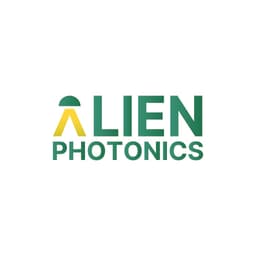


Low & Multiple Order Waveplates (Half-wave (HWP) & Quarter-wave (QWP) plates)
Low & Multiple Order Waveplates. Economical half and quarter single-plate waveplates for lasers systems, research and imaging.
Estimated Shipping Date: May 16, 2025 - May 30, 2025
* - Shopping cart pricing is based on the most recent pricing and it is NOT ORDERING, but requesting an official quotation which should typically reach You within 1-2 business days.
- Variants
- Description
- Applications
- Types
Low Order Waveplate - what is it ?
How low order waveplates differ from other waveplates?
The main difference between TZO and LO waveplates is that TZO is designed precisely for requested retardation, while LO waveplate is requited retardation with low (integer) number of orders (wavelengths). This LO design is different from effective zero order waveplate, which combines two waveplates (which cancel each other’s orders up until required retardation value). To sum up – Alien Photonics low order waveplates are robust (both physically and in terms of laser damage) and economical solution suitable for many applications.
Where Low Order (LO) Waveplates for lasers, research, imaging and other optical devices
Low-cost Low Order Waveplates for laser systems.
-In laser systems, low-order HWPs are used to rotate the polarization of laser beams. This helps with the control of laser outputs in medical applications.
-
QWPs are used in pulsed laser systems to control the polarization state of the pulses, which is essential for generating circularly polarized light or managing the pulse characteristics in ultrafast laser applications.
-
In laser-based material processing technologies utilize HWPs for polarization rotation to optimize laser-material interaction, improving the efficiency and quality of cutting, welding, and additive manufacturing processes.
Low Order Waveplates for scientific research
Polarization control using HWPs and QWPs is essential in spectroscopic techniques to analyze the structure and composition of materials by observing how they interact with polarized light.
Low Order Waveplates for imaging and microscopy
-
In polarization-sensitive imaging techniques, which rely on controlling the polarization state of light, low-order Alien Photonics waveplates can be used to probe the optical properties of materials, biological specimens, and nanostructures.
-
In optical microscopy, low-order waveplates can enhance contrast and resolution by converting linearly polarized light into circularly polarized light, reducing reflections and glare from shiny surfaces.
Types of Low Order Waveplates: Half-wave (HWP) and Quarter-wave (QWP)
Half-wave (HWP, λ/2) Low Order (LO) Waveplate
Alien Photonics HWP in low-order design specifically shifts the phase by π (180°) plus the low (integer) number of 2π (360°) multiples, effectively rotating the polarization direction of light. This makes the low-order HWP useful in applications requiring precise polarization control with moderate sensitivity to wavelength and temperature changes. The additional thickness of low order waveplates compared to ultra-thin true zero order waveplates, improves the HWP's tolerance to physical stress and temperature variations, making it well-suited for a wide range of optical setups where a perfect balance between precision and resilience is required.
Quarter-wave (QWP, λ/4) Low Order (LO) Waveplate
Similarly, Alien Photonics low-order QWP achieves a phase shift of π/2 (90°) plus the integer low number of 2π (360°) multiples. This creates conversion between linear and circular polarizations (and vice versa). The additional thickness of low order QWP waveplates compared to ultra-thin true zero order waveplates, improves the HWP's tolerance to physical stress and temperature variations, making it well-suited for a wide range of optical setups where a perfect balance between precision and resilience is required. The increase in thickness contributes to the QWP's improved physical robustness and thermal stability, ideal for applications needing reliable polarization control without the extreme sensitivity of thinner plates to environmental fluctuations.